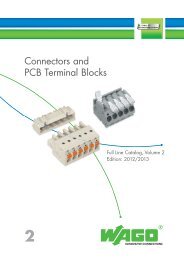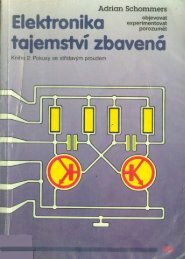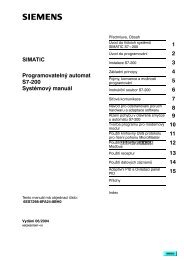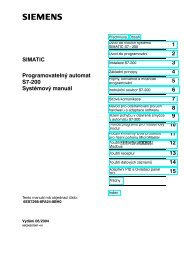WAGO-Product Short Form
Create successful ePaper yourself
Turn your PDF publications into a flip-book with our unique Google optimized e-Paper software.
0<br />
22<br />
Benefits of <strong>WAGO</strong> Connection Technology<br />
Gastight Clamping Units –<br />
Measurable Contact Quality<br />
Climatic chambers simulate standard atmospheres that could<br />
impact long-term constancy of clamping units. All <strong>WAGO</strong><br />
products meet requirements for the following climatic tests:<br />
• Temperature Cycling Test to<br />
IEC/EN 60947-7-1, IEC/EN 60998-2-2<br />
• Industrial Atmospheres to EN ISO 6988,<br />
IEC/EN 60068-2-42, IEC/EN 60068-2-60<br />
• Salt Spray Test to IEC/EN 60068-2-11,<br />
Marine Applications GL, LR, DNV<br />
• Quick Change of Temperature to IEC/EN 60068-2-14<br />
• Damp Heat,<br />
Cyclic (12 + 12 Hours)<br />
to IEC/EN 60068-2-30,<br />
Marine Applications GL, LR, DNV<br />
coating) within a<br />
defined contact zone.<br />
The conductor is embedded<br />
into the soft<br />
tin layer with high<br />
contact pressure,<br />
securing it against corrosive infiltration.<br />
The contact pressure<br />
N<br />
P = Force F [ N ]<br />
mm 2 Area A [mm 2 ]<br />
[ ]<br />
exerted by CAGE CLAMP ® terminations is similar to screwstyle<br />
terminals.<br />
Long-term consistency for the low contact resistance of both<br />
CAGE CLAMP ® and CAGE CLAMP ® S results from gas-tight<br />
clamping units. The spring clamp (acid- and saltwater-proof<br />
CrNi spring steel) presses the connected conductor against<br />
the current bar (electrolyte copper with lead-free, pure tin<br />
To best evaluate the quality of a clamping point, <strong>WAGO</strong> uses the following test procedures:<br />
The Voltage Drop Test evaluates clamping unit quality<br />
under stresses such as vibrations, temperature changes and<br />
corrosive influences.<br />
The Temperature-Rise Test examines the clamping unit,<br />
including the surrounding insulation, at rated current, overcurrent<br />
and short-circuit current levels.<br />
mV<br />
Voltage drop<br />
measuring point<br />
mV<br />
≤ 10 mm<br />
≤ 10 mm<br />
Temperature<br />
measurement<br />
A<br />
1__<br />
I Test<br />
10<br />
Test arrangement: “Voltage Drop Test”<br />
Voltage drop<br />
measuring point<br />
Test arrangement: “Temperature-Rise Test”








